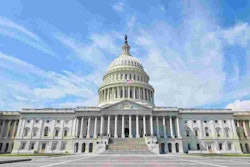 (Photo: Elvis Payne / Flickr)
(Photo: Elvis Payne / Flickr)Today’s economy has changed the way we conduct business, both at work and at home. Just like many families have had to cut back to the bare essentials, every company and government agency that I know has had to take a fine tooth comb to their finances and decide how best to allocate their dollars.
Even if we had all the money in the world, we still don’t have enough room in many of our cities and suburbs to build the highway capacity needed to keep up with a growing population that is increasingly moving to urban areas to find jobs or meet their social needs.
So what does this mean for the future of transportation?
For one, we need to be more efficient with our limited resources by using the latest technologies and best practices to manage the system more effectively and improve our decision-making when it comes to transportation investments. We also need to stabilize our existing funding system for the near-term while exploring alternative financing mechanisms that would allow drivers, transit riders and commercial operators to pay for their actual use of the infrastructure while getting a fair return on their investment in the form of improved system efficiency and more convenient, modern travel options.
One of the significant reforms from last year’s transportation bill that we focused on at the Intelligent Transportation Society (ITS) of America Annual Meeting is the establishment of a more performance-based planning and management process.
Declaring that “Performance management will transform the Federal-aid highway program and provide a means to the most efficient investment of Federal transportation funds…,” the law established seven national goal areas: safety, infrastructure condition, congestion reduction, system reliability, freight movement and economic vitality, environmental sustainability and reduced project delivery delays.
Based on these goals, the U.S. Department of Transportation (DOT) is in the process of establishing performance measures in consultation with State DOTs, metropolitan areas and other stakeholders. Among these are more traditional measures such as pavement and bridge condition and traffic fatalities. But the legislation also requires performance measures to be established for categories including traffic congestion, on-road mobile source emissions and freight movement.
Once the U.S. DOT issues national performance measures, states and metropolitan areas will set specific targets in each area, recognizing that traffic congestion in Los Angeles will look a lot different than in Laramie, Wyoming. This tiered approach will ensure that agencies at all levels are accountable for improving safety and efficiency and ensuring the nation’s infrastructure is in a state of good repair.
While this performance-based process is good policy, it also presents new opportunities for the intelligent transportation systems (ITS) community. Agencies now responsible for tracking this information can use technology to monitor and actively manage traffic conditions, detect and respond to traffic incidents in real-time, measure travel times and warn about road and bridge hazards and deterioration.
To help state and local agencies pay for these systems, Congress made sure ITS technologies are eligible for funding in all core highway and transit programs, and even provided financial incentives for states to invest in innovative technologies to improve the safety and efficiency of freight movement.
MAP-21 also created a new Technology and Innovation Deployment program to accelerate the adoption of innovative transportation technologies, and it continues to fund vital ITS research efforts like the Connected Vehicle initiative which is expected to save thousands of lives each year on U.S. roads.
ITS America and the innovation leaders who make up our membership showcased the latest technology solutions for performance management at our Annual Meeting, during which we also hosted numerous policy and technical sessions and partnered with the Federal Highway Administration on training sessions for state and local officials. More than 20 State DOT also came together to share best practices and discuss opportunities for collaboration in the year ahead.

For more information about ITS America’s Annual Meeting, visit itsa.org/annualmeeting.
Editor’s Note: Scott F. Belcher is the president and CEO of the Intelligent Transportation Society of America.












